Indoor places such as living rooms, dining rooms, bedrooms, and offices have lately been popular for common types of succulents plants as decorations. In addition, these can also be discovered outdoors. Succulents are unique among plants due to the property that their stems can hold water, which is why they flourished in the desert and humid settings in the beginning.
As a result, the Latin word sucus, which means juice sap, was used to coin the phrase succulent. Succulents are made even more intriguing by the fact that they come in a variety of shapes and sizes. Their varieties are the simplest plants to keep alive; they are the planet world’s unique species that gets stronger when not taken care of.
Most succulent types, for the most part, like light and can go extended periods without being watered. Succulent plants come in a broad range of forms and sizes, making them ideal for your interior décor or interior garden. All types of succulents, however, have comparable features, such as the ability to retain water, making plants drought tolerant.
Proper Identification of Succulent Varieties
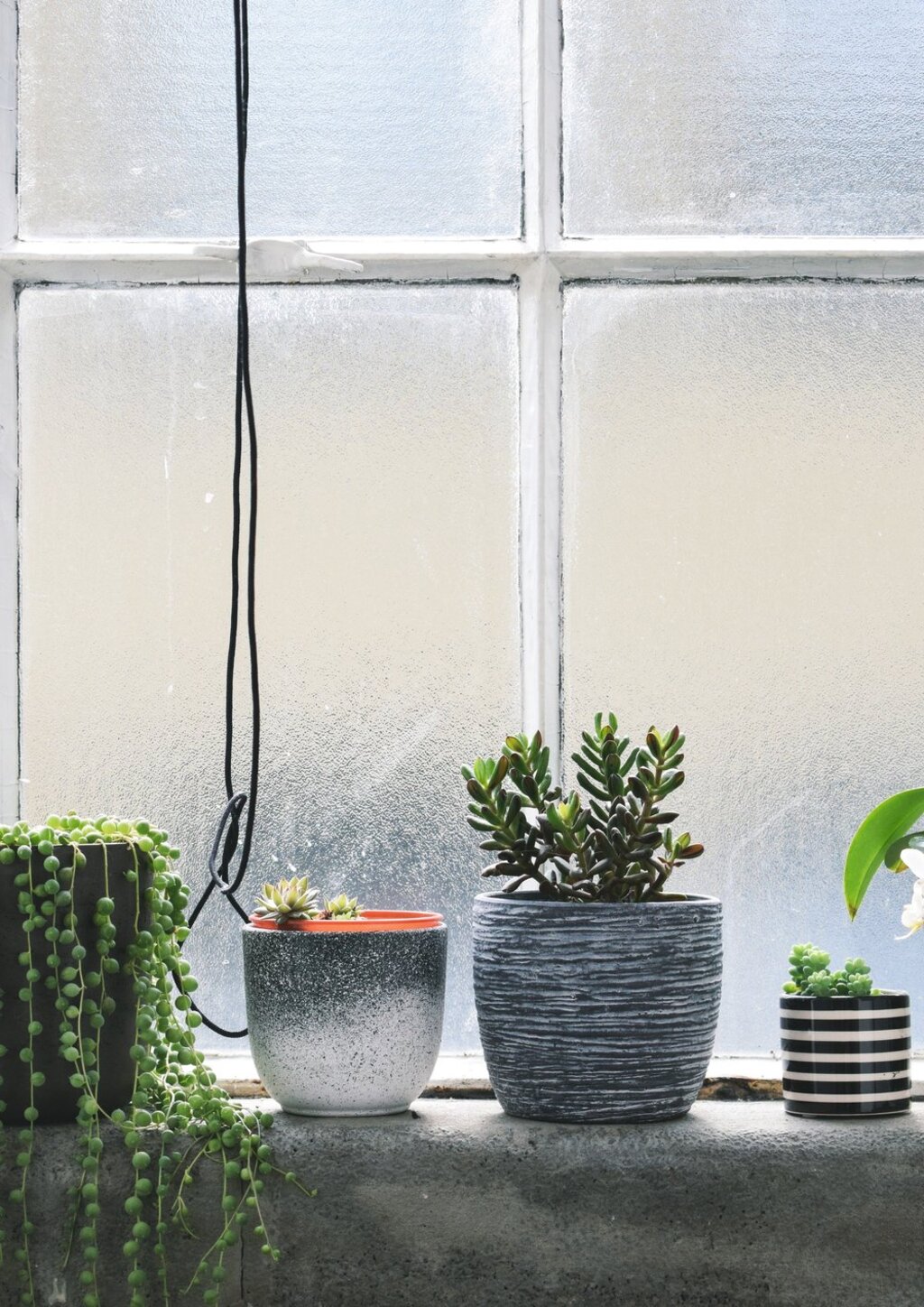
When you have a passion for succulents, knowing their names becomes essential. Accurate succulent identification is a difficult task. Succulents with the same common name or a similar look might have vastly diverse features. The difference between them can sometimes be seen in their winter hardiness. A misidentification of succulents might result in dead plants that are destroyed by the cold. Some succulents, however, are poisonous to dogs and children. To safeguard the safety of your plants and family, identification of these plants is important.
When Recognizing Succulents, Check for the Following Plant Characteristics:
- The shape, size, and thickness of leaves.
- Hues of leaves, flowers, and stems.
- The shape, colour, number of petals of flowers.
- colour, texture, and length of the stem.
- Ciliate hair.
- Spikes, spines, or smooth.
- Epicuticular wax.
- Appearance (shape and size) of the plant.
- Cold hardiness.
- Growing conditions best suited for the plant.
Although knowing about the succulent’s cold tolerance and how to care for it are key aspects of recognizing succulents, this knowledge can also be utilized to find its name.
Common Questions: Are Succulents
Is Drought Tolerant?
Drought-tolerant and winter-tolerant succulents are the two types of succulents. Drought-tolerant succulents are those that can retain water for longer periods between waterings and are unconcerned with the quantity of light and shade they receive.
They can flourish in their current location. Winter-hardy succulents, on the other hand, can flourish in lengthy periods of winter dryness and frost, making them the finest outdoor succulents.
Only Grown in Rocks?
Some succulent types may thrive in rocky soil if it drains well. In reality, these succulents can be grown indoors using gravel soil as long as it has enough minerals for the succulents to thrive. Cacti, for example, can grow in both gravel and very rocky soils.
Succulents may be planted directly in stones as long as a substantial volume of soil is used as the foundation layer. A small amount of soil is required for the proper growth of the roots as succulents are like plants.
Easy to Grow?
Succulents offer the ultimate awe value because they are simple to cultivate and do not require any ongoing upkeep. So, they are easy to grow and maintain.
10 Types of Succulents for Breathing Spaces
A succulent could be the one if you desire a plant that will tolerate, and even flourish with limited care.
Here is a list of succulents with their unique characteristics that may be a match for your indoors.
Aloe Vera
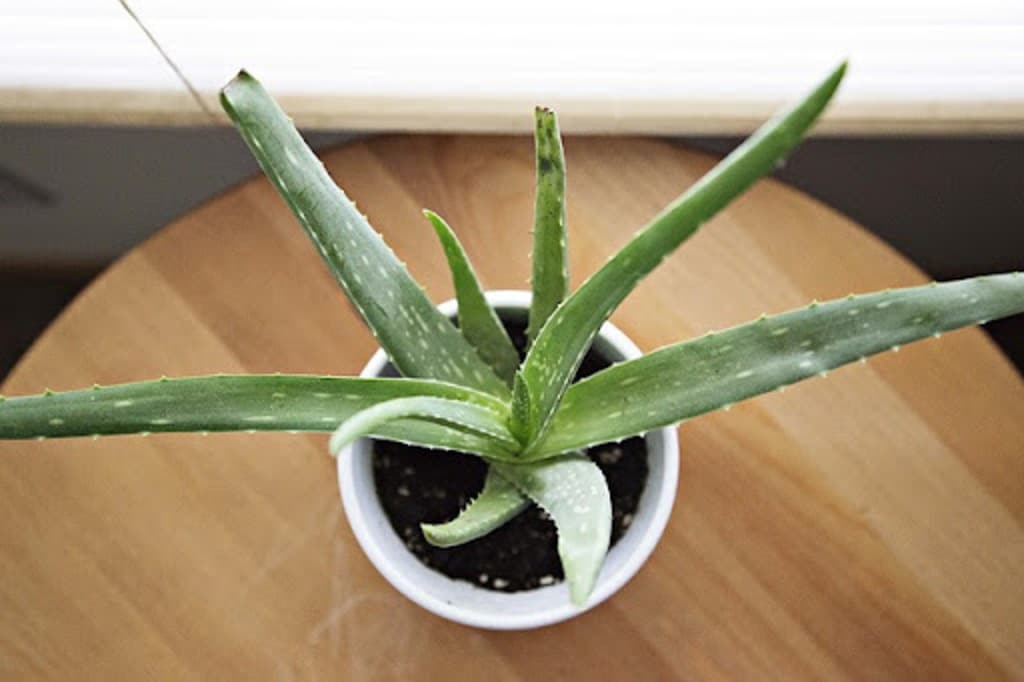
This Arabian plant thrives wild in many tropical areas, and surprisingly, it isn’t a desert cactus. Aloe vera is the first on the list of succulents that belongs to the lily family.
While many people cultivate this plant merely for the beauty of its speckled and thorny leaves, it is also used medicinally. If you have a burn, just cut apart a leaf and squeeze out the gel to apply to the affected area. For this reason alone, many keepers believe it beneficial to have this plant in their house in the event of an emergency.
Bunny Ear Cactus (Opuntia microdasys)

There are no leaves or stalks on this cactus. Its pods, on the other hand, develop in big, oval clusters that resemble bunny ears. The Polka Dot Cactus and Angel Wings are two of its other nicknames, both derived from its aureoles, which produce fluffy white tufts over its pads! Naturally, no matter how fluffy a specimen you come upon, these tufts may still puncture your fingertips.
These succulent types start as little cuttings, although they can grow large enough to be outside. If you reside in a hotter area, you should only keep it outside. If you can find a light window, this cactus can stay tiny enough to thrive indoors! It will not blossom unless the temperature drops to 45-55°F throughout the winter.
Common Succulents: Burro’s Tail (Sedum morganianum)

It has soft, fleshy leaves and is easy to care for as a sedum. The Burro’s Tail is also known for growing long, trailing stems that may reach 4 feet in length. This type of succulent indoors is a fantastic addition, as it can be planted and hung as indoor hanging plants. The leaves can be used to propagate plants. This succulent type is non-toxic to animals and humans, so the trailing plant could be a perfect add-on to the interiors.
Agave Sp.
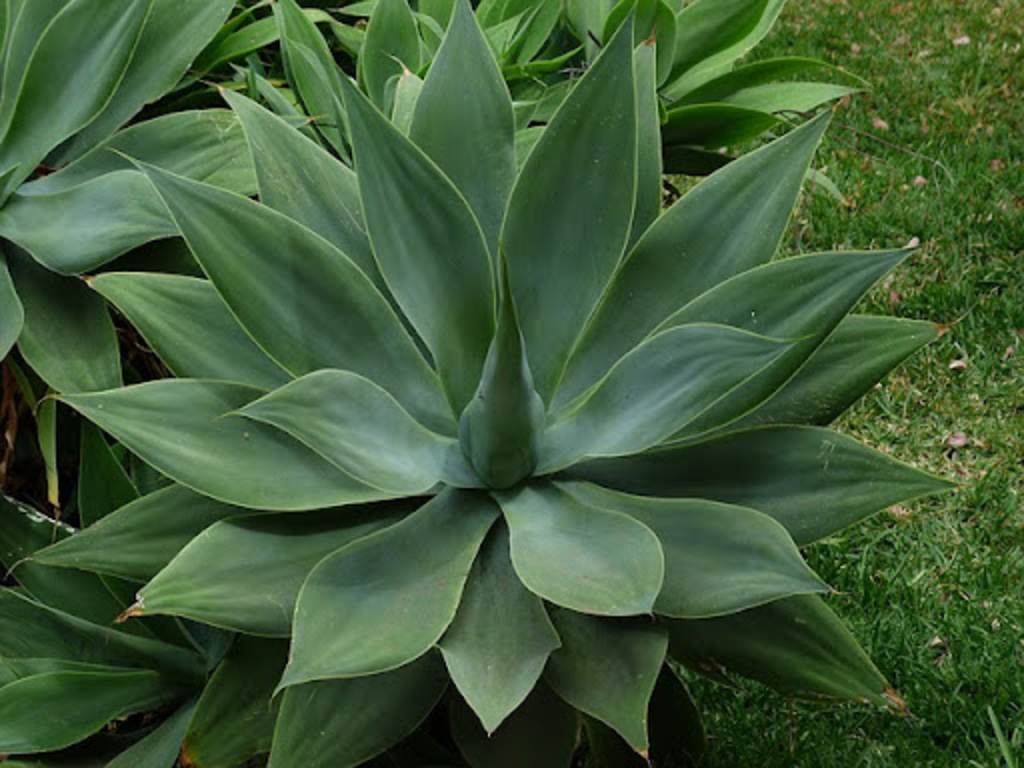
These Mexican succulents have enormous, sharp-pointed leaves, and certain types are used to make sugar and tequila syrups.
Massive rosettes up to 10 feet wide develop from these plants. The foliage of cold-hardy variants is blue-green, whilst warmer species have grey-green leaves. They barely produce flowers because they do not bloom until they have reached full maturity, which can take up to 40 years. They produce bell-shaped blooms in light, cream, and yellow colours after they have done so.
Chinese Money Plant
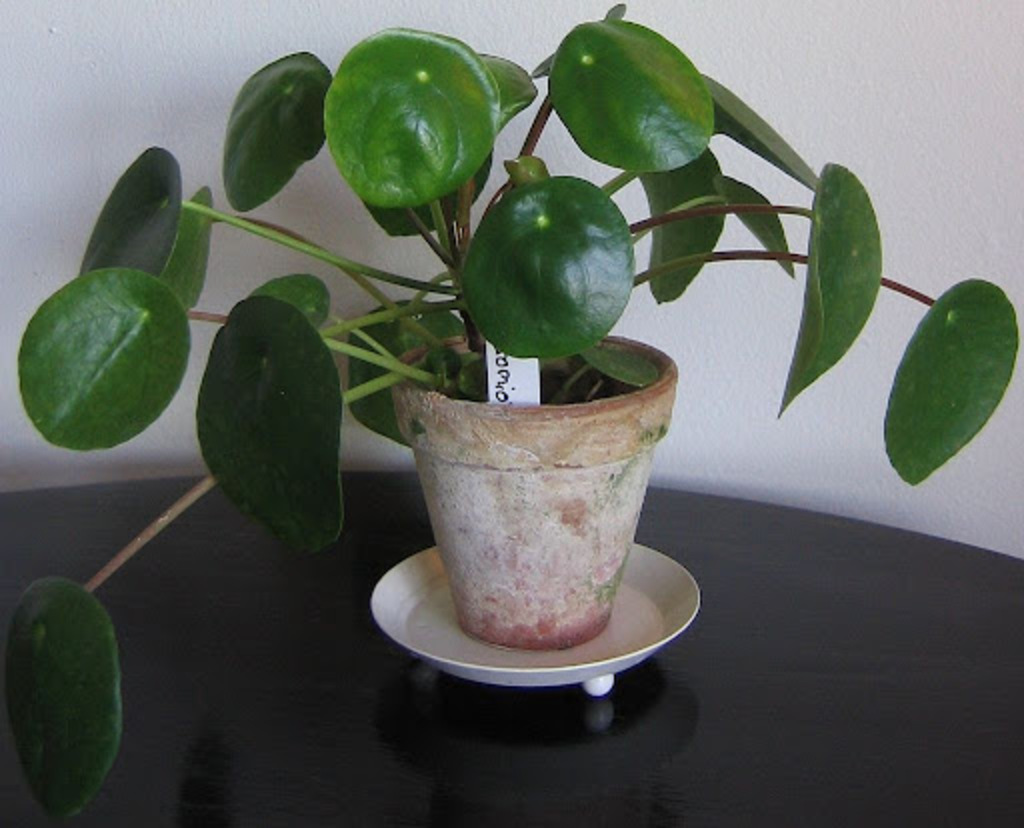
Certain kinds of these Mexican succulents are used to produce sugar and tequila syrups because of their large, sharp-pointed leaves. These plants produce massive rosettes up to 10 feet wide. Cold-hardy varieties feature blue-green foliage, whilst warmer species have grey-green foliage.
Because they do not bloom until they have achieved full maturity, which can take up to 40 years, they yield very few blooms. After that, they produce bell-shaped flowers in light, cream, and yellow colours. These terrarium-friendly succulent types are frequently given as a gift as a lucky or friendship plant.
Hens and Chicks (Sempervivum tectorum)
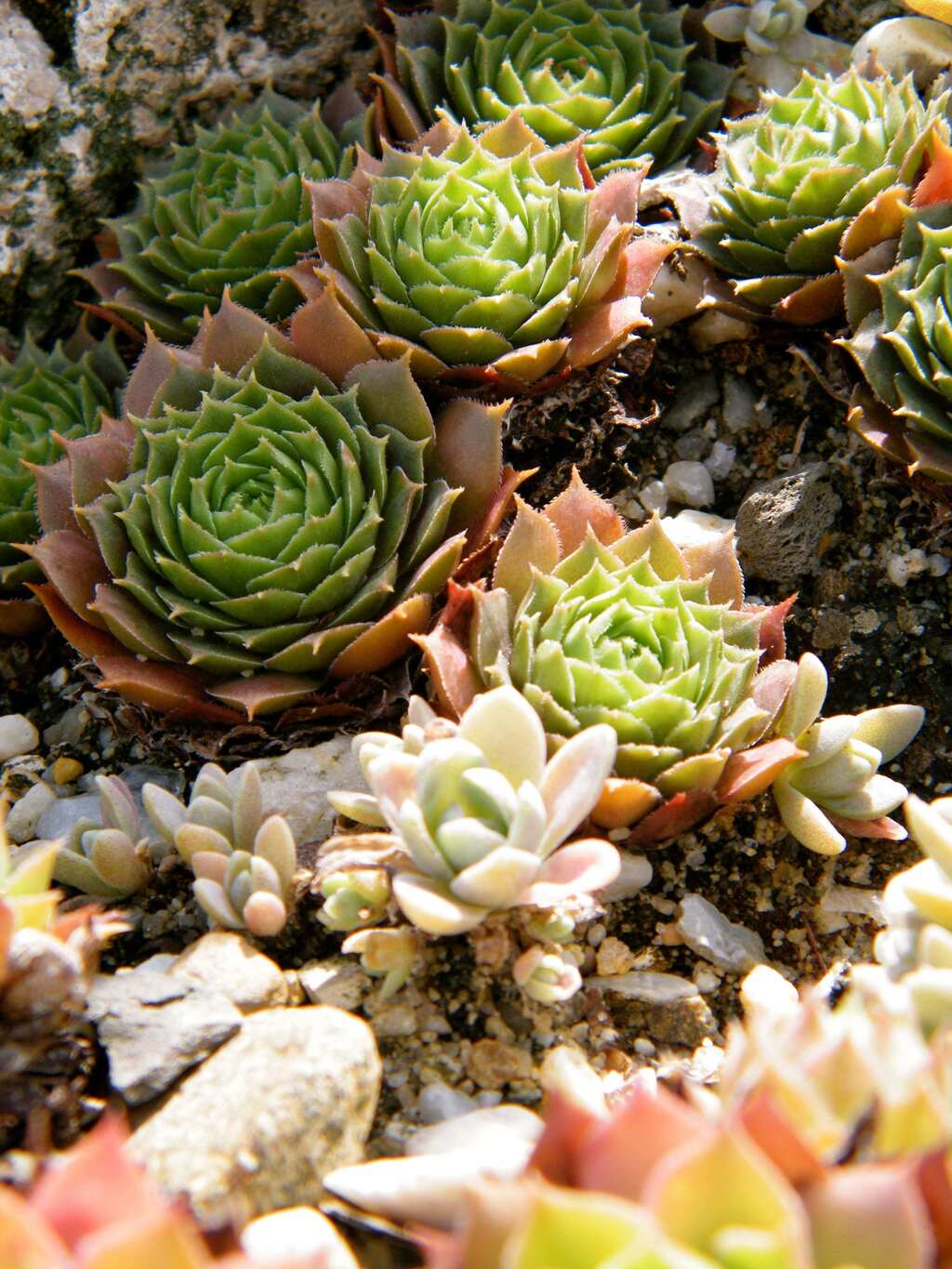
Another sempervivum, known as “hens and chicks,” this rosette-shaped plant grows to about 4 inches by 4 inches. It will put out horizontal stems that will develop its “chicks” as well as seed-bearing stalks up to 12 inches tall in the summer.
Because this is a monocarpic species, it will perish after it blooms. This is a wonderful ground cover choice because of its proclivity to spread and stay short!
These succulent types are known for being unique and wonderful garden plants as well as having been used in the past to conceal leaks and hold roofing tiles in place.
Crown of Thorns (Euphorbia milii)
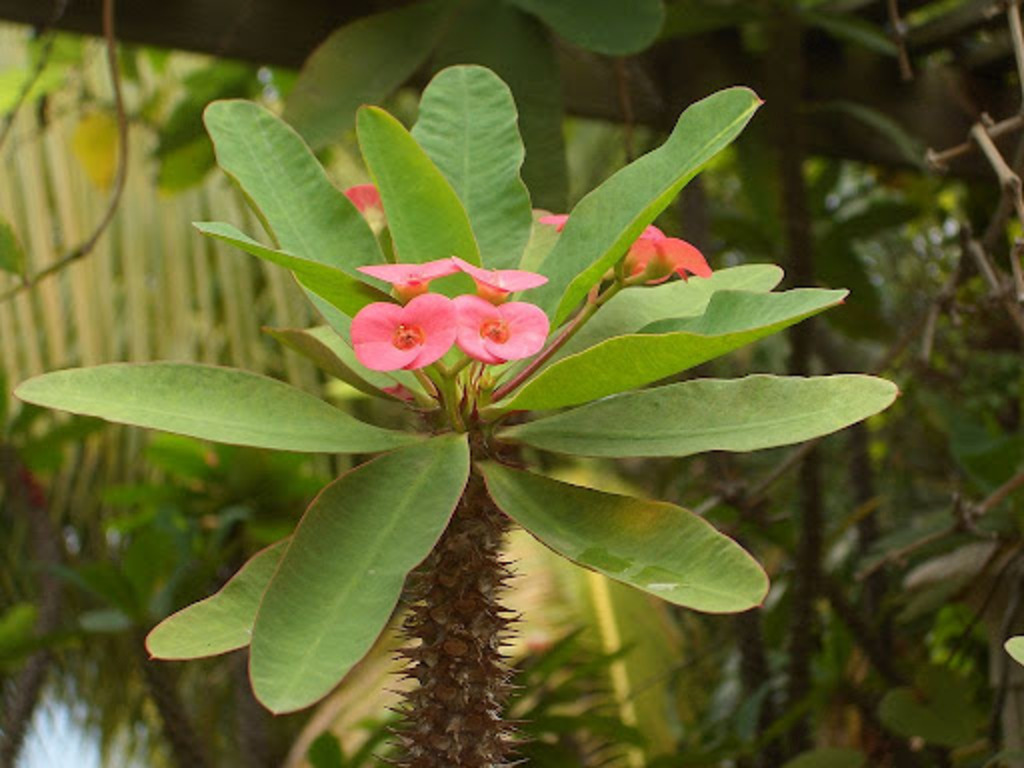
This plant originated in Madagascar and has been across the globe for hundreds of years. Crown of Thorns is a 6-foot-tall poisonous shrub that produces small, spherical flowers, which are bracts, in a range of brilliant hues. It may grow up to 3 feet long and scrambles over other plants in the wild. It develops tall branches that are bright and spectacular plants at home, with fascinating and occasionally multicoloured leaves!
Jade Plant (Crassula Ovata)

These ubiquitous South African plants are prized for their simplicity of maintenance, although they require more attention and are less drought-resistant than many other succulents types. They require a bit more care to their hydration level than their drought-tolerant companions.
With a height of 5 feet, the Jade Plant may easily become a little interior tree. Its stems can grow a darker, thicker skin that looks like a tree trunk over time. With so many thick leaves on its limbs, it makes for an intriguing tree.
Mistletoe Cactus (Rhipsalis sp.)

Numerous ambiguous branches with tiny hairs at nubs characterize this odd epiphyte. It has a lot of pale yellow to white flowers. This is the most well-known and extensively spread epiphytic succulent, therefore it’s a fun plant to keep. Because it’s an epiphyte, this plant may be used as a mounted piece or in a hanging basket.
At its happiest, the Mistletoe Cactus may reach a huge, fluffy 10 feet, yet most people find that it remains nicely in control in a basket.
Tree Houseleek (Aeonium Arboreum)
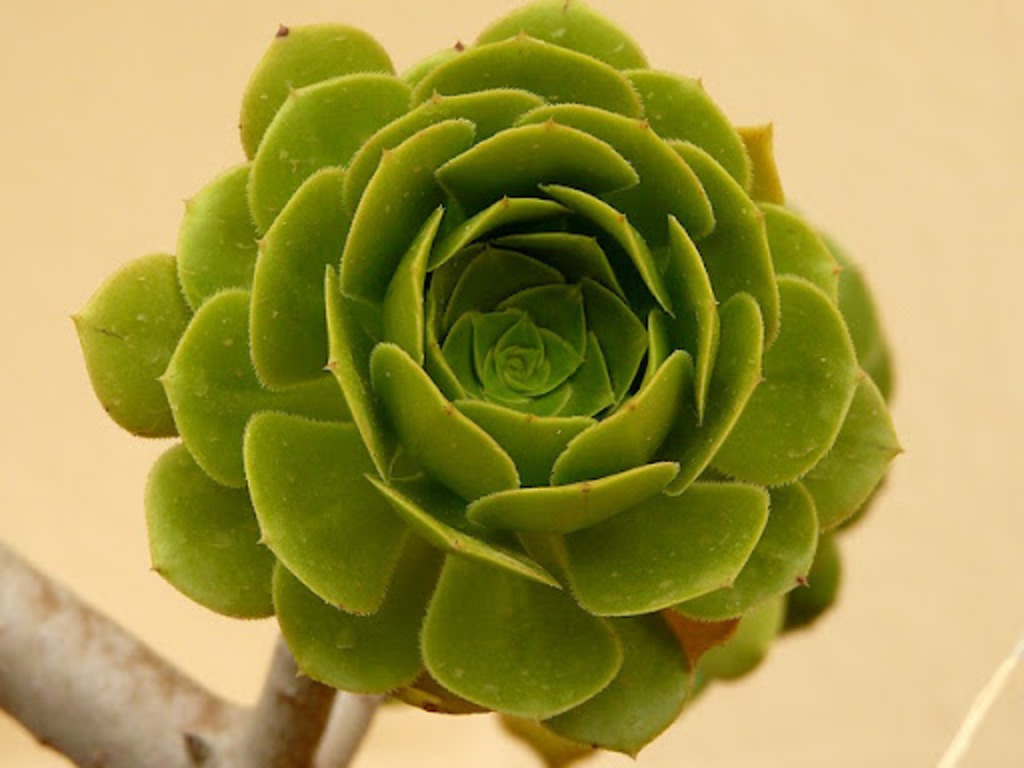
The Tree Houseleek, which is native to the Canary Islands and East Africa, thrives in warm conditions and produces lovely pyramid-shaped yellow flowers.
The Tree Houseleek is a fascinating and attractive plant even when it isn’t blooming. Tree-like leaves grow in immaculate rosettes atop long stalks. Because its leaves are a stunning shade of purple-black, ‘Zwartkop’ is one of the most popular cultivars for this purpose. Most importantly, this tall and fascinating foliage provides an excellent addition to rock gardens.
Experience Magic with These Succulent Plant Representative Species
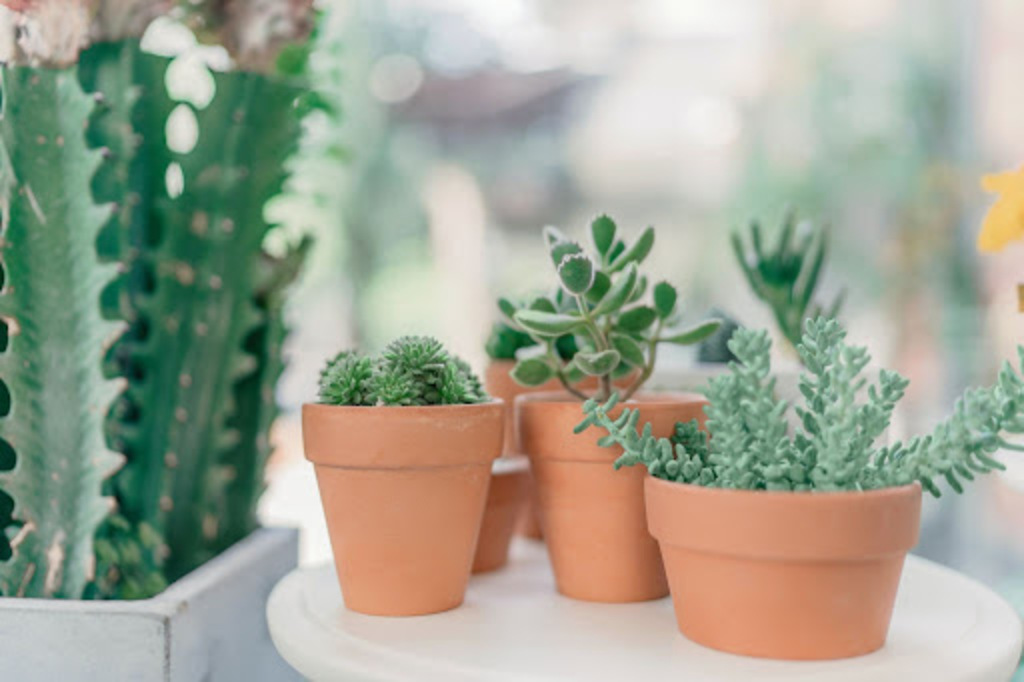
With a wide variety of succulents, these easy-to-grow types are the most trending indoor decor nowadays, mainly because of the low maintenance and attention they demand. These are the best options for the ones with a green thumb and little time. Different types of succulents will impart their unique magic to the decor.
Explore more:

